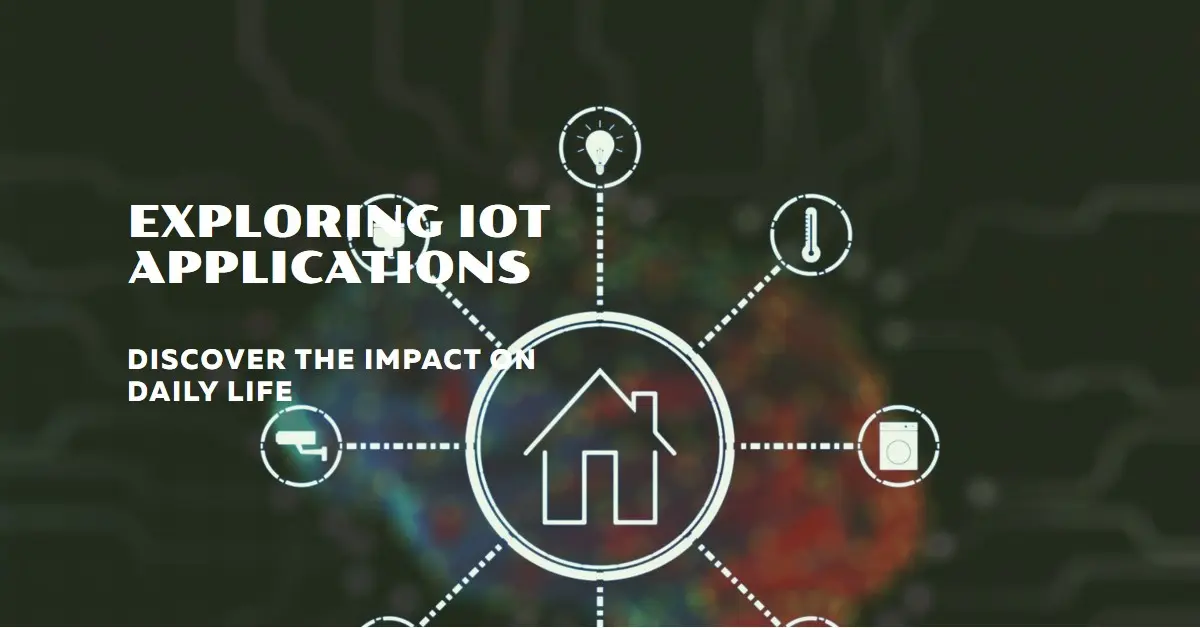The Internet of Things (IoT) has become an integral part of our daily lives, revolutionizing how we interact with technology and the world around us. From smart homes to connected cars, IoT applications in day-to-day life are numerous and varied, enhancing convenience, efficiency, and even our safety. This blog explores the myriad ways IoT is embedded in our daily routines, examines some of the most common applications, and looks ahead to the future of this transformative technology.
Understanding IoT
The Internet of Things (IoT) refers to the network of physical objects—devices, vehicles, appliances, and more—embedded with sensors, software, and other technologies that connect and exchange data with other devices and systems over the internet. These interconnected devices collect and share data, enabling smarter decision-making, automation, and efficiency.
Common IoT Applications in Daily Life
IoT applications in day-to-day life span various sectors and activities. Here are some notable examples:
Smart Homes
Smart homes are perhaps the most visible examples of IoT in everyday life. Devices like smart thermostats, lighting systems, security cameras, and smart speakers have become household staples. These devices not only enhance convenience but also improve energy efficiency and security. For instance, a smart thermostat can learn your preferences and adjust the temperature accordingly, saving energy and reducing utility bills.
Wearable Devices
Wearable devices, such as fitness trackers and smartwatches, are another prominent application of IoT in daily life. These devices monitor various health metrics like heart rate, sleep patterns, and physical activity, providing valuable insights and encouraging healthier lifestyles. They can also alert users to potential health issues, making preventive healthcare more accessible.
Connected Cars
The automotive industry has embraced IoT, leading to the development of connected cars. These vehicles are equipped with sensors and internet connectivity, enabling features like real-time navigation, predictive maintenance, and enhanced safety through advanced driver-assistance systems (ADAS). IoT devices examples in cars include GPS systems, in-car entertainment, and diagnostic sensors.
Smart Appliances
In modern kitchens, smart appliances such as refrigerators, ovens, and coffee makers have become common. These appliances can be controlled remotely via smartphone apps, provide status updates, and even offer recipe suggestions based on the ingredients available. This integration of IoT enhances convenience and efficiency in household chores.
Healthcare
The healthcare sector has significantly benefited from IoT applications in real life. Remote patient monitoring devices, smart medical equipment, and telemedicine platforms are just a few examples of internet of things in everyday life. These technologies enable continuous health monitoring, timely medical interventions, and improved patient outcomes.
Importance of IoT in Daily Life
The importance of IoT in daily life cannot be overstated. Here’s how IoT impacts our everyday activities:
Enhanced Convenience
IoT uses in daily life streamline various tasks, making daily routines more convenient. For example, smart home devices automate lighting, heating, and security, allowing users to control these systems remotely and save time.
Improved Efficiency
By collecting and analyzing data, IoT devices optimize processes and improve efficiency. In smart homes, for instance, energy consumption is optimized based on usage patterns, leading to significant cost savings.
Increased Safety
IoT enhances safety through applications like home security systems, connected cars with advanced safety features, and health monitoring devices. These technologies provide real-time alerts and responses to potential threats or health issues.
Real-Life Examples of IoT
To illustrate the applications of IoT in everyday life, here are some real-life examples of IoT:
Smart Doorbells
Smart doorbells equipped with cameras and motion sensors allow homeowners to see and speak with visitors remotely. This adds a layer of security and convenience, especially when one is not at home.
Connected Lighting Systems
Smart lighting systems can be controlled via smartphone apps or voice commands. They can adjust brightness based on time of day or presence, enhancing energy efficiency and ambiance.
Health Monitoring Systems
Wearable health monitoring systems like glucose monitors and blood pressure cuffs transmit data to healthcare providers in real-time, facilitating timely medical interventions.
Negative Impact of IoT on Our Lives
While IoT offers numerous benefits, it is also essential to consider the negative impact of IoT on our lives:
Privacy Concerns
IoT devices collect vast amounts of data, raising concerns about privacy and data security. Unauthorized access to personal information can lead to privacy breaches and misuse of data.
Security Risks
The interconnected nature of IoT devices makes them vulnerable to cyberattacks. Hackers can exploit security flaws to gain control of devices, leading to potential harm and data breaches.
Dependence on Technology
As we become more reliant on IoT devices, there is a risk of overdependence on technology. This can lead to reduced self-sufficiency and potential issues if devices fail or are compromised.
Read more: http://getinsights360.com/5-ways-the-benefits-of-iot-enhance-real-life-scenarios/
The Future of IoT
The future application of IoT promises even more advanced and integrated solutions. Here are some anticipated developments:
Smart Cities
The concept of smart cities involves integrating IoT into urban infrastructure to improve living conditions, efficiency, and sustainability. Applications include smart traffic management, waste management, and energy-efficient buildings.
Healthcare Innovations
Future IoT applications in healthcare could include more sophisticated remote monitoring systems, personalized medicine based on real-time data, and advanced telemedicine solutions, making healthcare more accessible and efficient.
Industrial IoT
In the industrial sector, IoT will continue to revolutionize manufacturing processes through predictive maintenance, real-time monitoring, and automation, leading to increased productivity and reduced downtime.
Conclusion
In summary, IoT applications in day-to-day life are transforming how we live, work, and interact with the world. From smart homes and wearable devices to connected cars and healthcare innovations, IoT enhances convenience, efficiency, and safety. However, it is crucial to address the associated challenges, such as privacy concerns and security risks, to fully harness the potential of IoT. As technology continues to evolve, the future of IoT holds exciting possibilities, promising even more profound impacts on our daily lives.
By understanding and leveraging the importance of IoT in daily life, we can look forward to a more connected, efficient, and convenient world.
